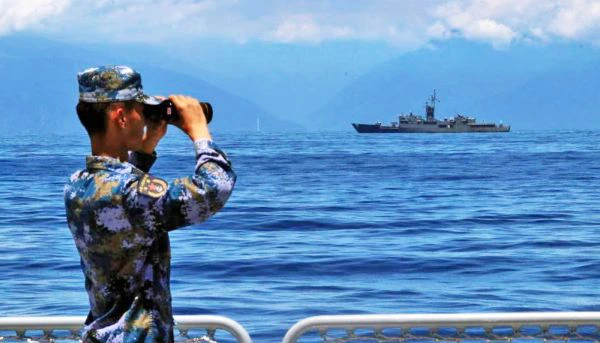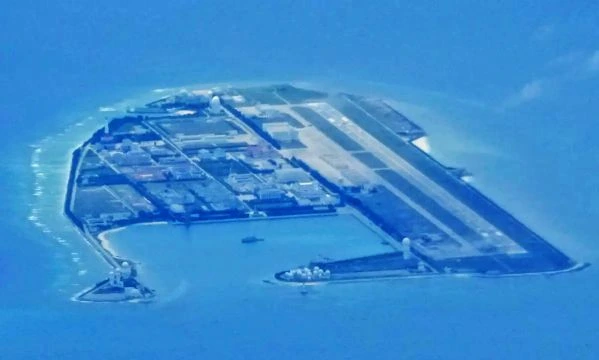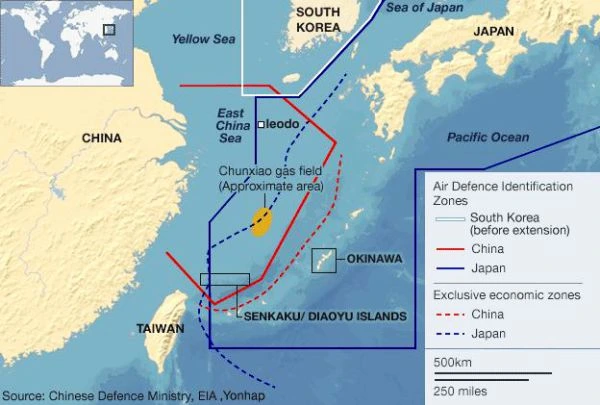

The PRC continues to refine military reforms associated with the establishment of the Eastern, Southern, Western, Northern, and Central Theater Commands, which are organized based on the Beijing’s perception of peripheral threats.
Under the direction of the Central Military Commission (CMC), each Theater Command has operational authority over the PLA conventional forces within the theater.
Developments in the Security Situation in the Taiwan Strait
The PRC intensified diplomatic, economic, political, and military pressure against Taiwan in 2021.
Throughout 2021, the PLA increased provocative and destabilizing actions in and around the Taiwan Strait, to include increased flights into Taiwan’s self-declared Air Defense Identification Zone (ADIZ) and conducting island seizure exercises.
Although the PRC publicly advocates for peaceful unification with Taiwan, the PRC has never renounced the use of military force. The circumstances under which the PRC has historically indicated it would consider using force remain ambiguous and have evolved over time.
The PRC could conduct a range of options for military campaigns against Taiwan, with varying degrees of feasibility and associated risks. These options may range from an air and/or maritime blockade to a full-scale amphibious invasion to seize and occupy some of its offshore islands or all of Taiwan.
The PLA’s Growing Global Presence
CCP leaders view the PLA’s growing global presence as an essential part of the PRC’s international activities to create an external environment conducive to China’s national rejuvenation.
The CCP has tasked the PLA to develop the capability to project power outside the PRC’s borders and immediate periphery to secure Beijing’s growing overseas interests and advance its foreign policy goals.
The PLA’s Evolving Missions & Tasks
The PLAN’s evolving focus from “near seas defense” to “far seas protection” reflects the PLAN’s interest in a wider operational reach.
The PLAAF’s missions and tasks have similarly evolved towards conducting operations beyond China and its immediate periphery and supporting the PRC’s interests by becoming a “strategic” air force.
The PLA has embraced its concept of non-war military activities (NWMA) as an effective way to support and safeguard the PRC’s development, expand the PRC’s global interests, and gain valuable operational experience.


PRC Influence Operations
The PLA views controlling the information spectrum in the modern battlespace as a critical enabler and means of achieving information dominance early in a conflict.
The PRC conducts influence operations that target media organizations, business, academic, cultural institutions, and policy communities of the United States, other countries, and international organizations to shape public discourse and achieve outcomes favorable to its strategic and military objectives.
PRC influence operations are coordinated at the high level and executed by a range of actors, such as the PLA Political Work Department, United Front Work Department (UFWD), International Liaison Department, the Ministry of State Security (MSS), and the PLA Strategic Support Force (SSF).
The CCP seeks to condition international institutions and public opinion to accept the PRC’s narrative surrounding its priorities such as Beijing’s “one China principle” on Taiwan unification, the Belt and Road Initiative, political control over Hong Kong, and territorial and maritime claims in the South China Sea and East China Sea.
PLA Overseas Basing and Access
The PRC is seeking to expand its overseas logistics and basing infrastructure to allow the PLA to project and sustain military power at greater distances.
A global PLA military logistics network could disrupt U.S. military operations as the PRC’s global military objectives evolve.
Beyond the PLA support base in Djibouti, the PRC is likely already considering and planning for additional military logistics facilities to support naval, air, and ground forces projection.


The PRC has likely considered Cambodia, Myanmar, Thailand, Singapore, Indonesia, Pakistan, Sri Lanka, United Arab Emirates, Kenya, Equatorial Guinea, Seychelles, Tanzania, Angola, and Tajikistan, among other places, as locations for PLA military logistics facilities.
Based on the Annual Report to U.S. Congress by the Secretary of Defense: Military and Security Developments Involving the People’s Republic of China, 2022
















